If you're looking for a substitute to xanthan gum or guar gum that will still give your gluten free baked goods an amazing texture, you have come to the right place! Here are ten tried-and-tested options and some help on using them as an alternative to xanthan gum.
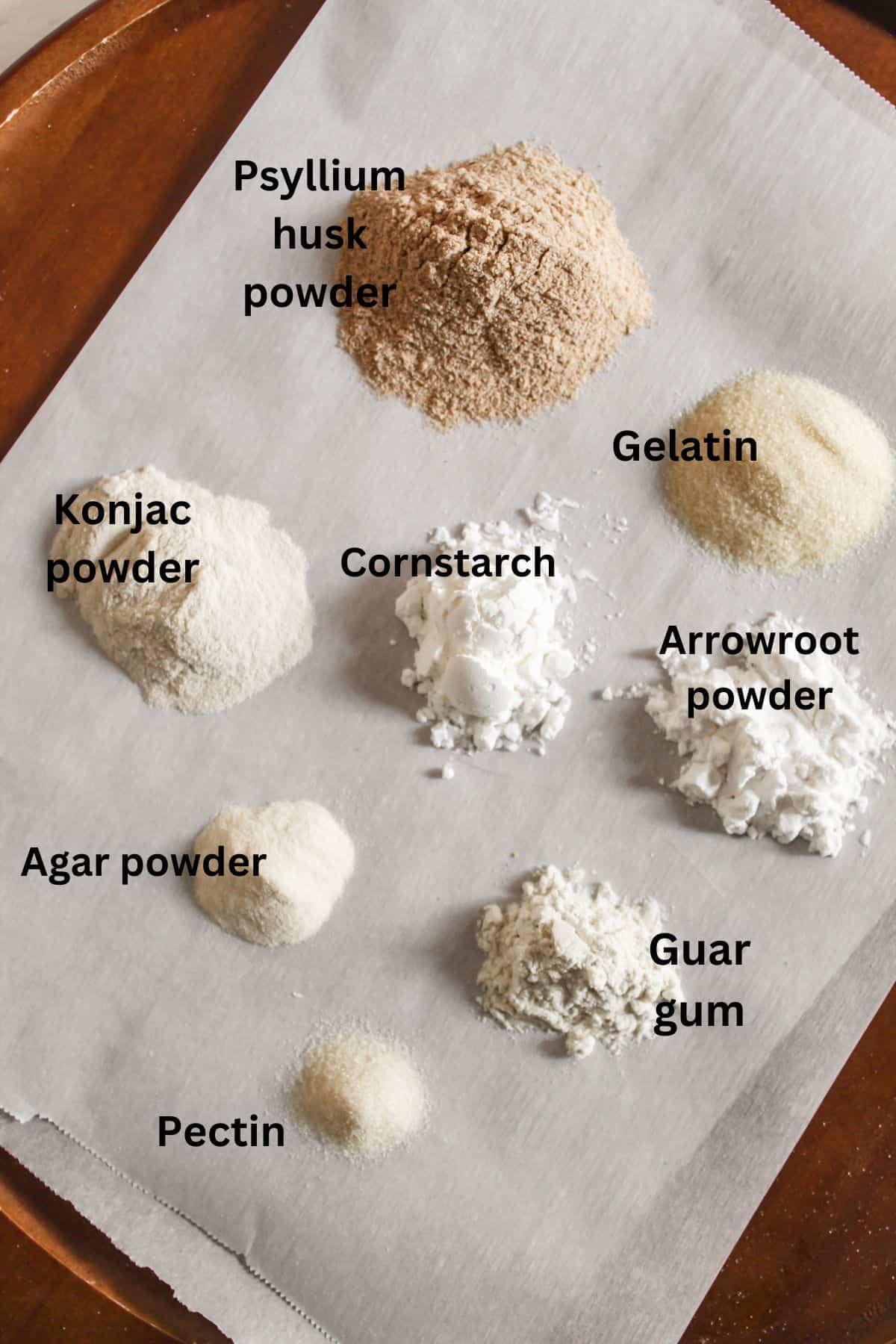
Those who have tried and failed know all too well the challenge gluten-free baking presents. Even the most seasoned gluten free baker sometimes experiences cupcakes having the hardness and dryness of a biscuit and breads that are flat and dry. Baking without gluten affects the texture, taste and structure of baked goods, which is why xanthan gum is so important in a recipe. And if you aren't using it, you need to use a xanthan gum replacement to function as the binder in your gluten-free recipes.
Jump to:
Xanthan Gum Alternative: Key Take-Aways
For the best results when substituting xanthan gum, use a binding ingredient listed below:
- Psyllium Husk - can cause digestive issues in large amounts
- Chia Seeds - ground into smaller chia seed before using
- Flax Seeds - ground into flax meal before using
- Unflavored Gelatin - NOT a vegan product
- Agar Agar
- Konjac Powder
- Egg Whites - whipped
- Arrowroot Starch - also called arrowroot flour
- Pectin - vegan alternative to gelatin
- Corn Starch
Find out the measurements for using each substitute in the list below.
Xanthan Gum in Baking
If you've ever wondered what exactly is xanthan gum, you are not alone! Xanthan gum is a fine powder substance that is typically used in small amounts in a variety of ways, it's most popular use is as a binder and thickening agent in gluten free baking. It acts as a stabilizer to prevent baked goods from falling apart. It's a popular ingredient and also used in salad dressings, soups, ice cream and even syrups.
This light and fluffy French bread uses xanthan gum whereas this gluten free white bread does not.
Gluten-Free Binding Ingredients: Substitutes to Xanthan Gum
Just as the name implies, a binding agent helps ingredients stick together. Gluten is a protein, but it's also a binder. It traps air bubbles inside the batter to create the perfect balance of air, wet and dry ingredients.
When you remove gluten from a baked good, it can turn into a runny mess if you don't replace it with something else. The lack of a binding agent not only affects the appearance of your baked goods, but it can affect the taste too.
Popular alternatives to gluten as a binding agent exist in the form of xanthan gum and guar gum. While they're widely used, like gluten, some people experience problems with these too. The good news is that many alternatives DO exist and most of them work just as well, giving your gluten-free baking the light, airy and melt in your mouth texture you crave. Here are 10 substitutes to xanthan gum:
1. Psyllium Fiber (Psyllium Husk Powder)
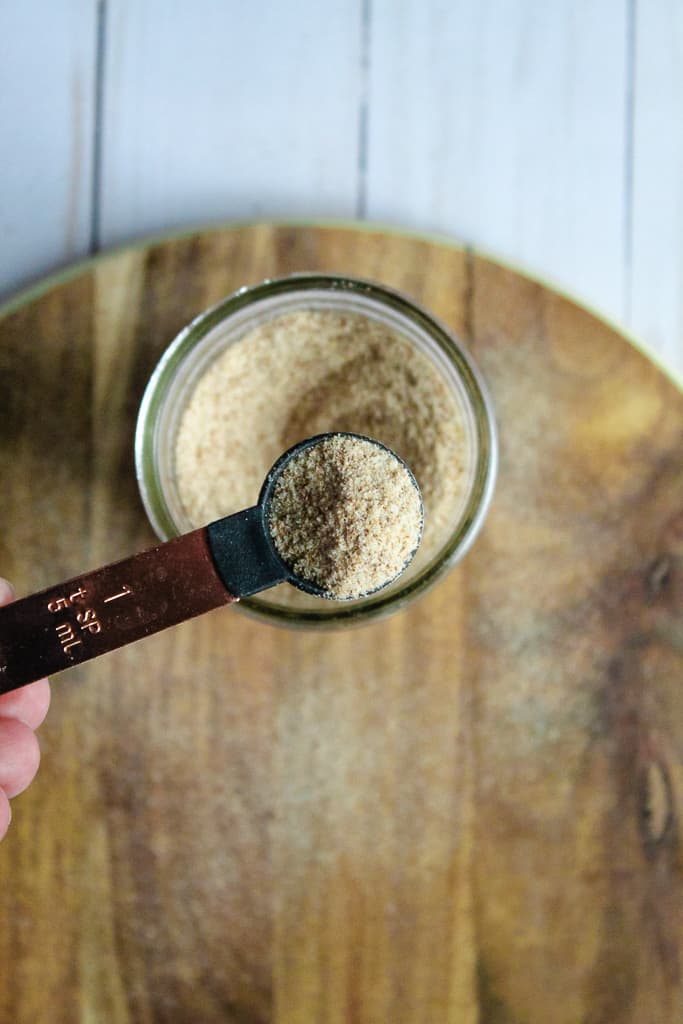
Psyllium fiber is found in most health stores as a dietary fiber supplement. It’s popular among bodybuilders and athletes as it helps maintain their digestive health while actively helping to reduce cholesterol. So that's why it may come as a bit of a surprise that psyllium husk powder has been shown to be a great binding agent which improves the baking quality of bread, therefore making it a great substitute for xanthan gum.
A little background on psyllium husk powder
A study conducted in Kuwait proved it. Long story short... scientists started the research with a totally unrelated agenda – they wanted to increase the fiber content in bread. In their experiments, one of the ingredients they added in their blend of flour was 5% psyllium husk powder. The results were completely unexpected and even encouraging from a baking perspective. Not only did the bread rise a little higher, it also retained more moisture and had more volume overall.
That’s not all.
An additional study was performed at the University of Milan and Michigan State University. This particular study sought to improve the structure of gluten-free dough. And guess what? “Psyllium fibre [psyllium husk powder] generally enhanced the physical properties of the doughs."
If you haven't tried psyllium husk powder as an alternative to xanthan gum or guar gum, here are two recipes that use psyllium husk powder:
Gluten Free, Dairy Free and Gum Free Dinner Rolls
Gluten Free 'Boston' Style Brown Bread
You can buy psyllium husk powder on Amazon.com.
Using psyllium husk powder as a xanthan gum substitute
Add no more than 2 teaspoons of psyllium husk powder in place of xanthan gum in a recipe. For recipes with 2 cups of flour/starch or less, use 1 teaspoon.
2. Chia Seeds
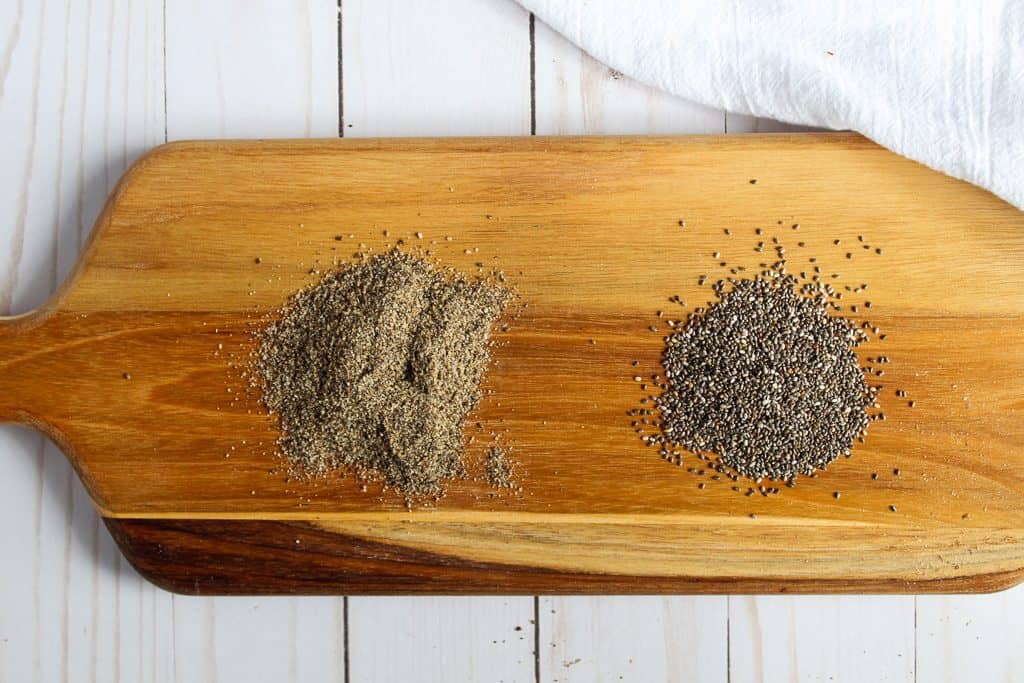
Chia seeds are used for everything from sprinkling into flour mixes to add a nutritional boost to substituting for an egg. From a nutritional perspective, chia seeds are as close to a ‘superfood’ as you can get. They are rich in Omega 3 fatty acids (more than 2.5 times that of flaxseed), protein and fiber, just to mention a few. On top of all that, they can be used as a binding agent too.
Besides being very high in soluble fiber, they are also hydrophilic (water absorbing). Chia seeds can absorb up to 12 times their own weight in water, forming a gel like substance which locks in moisture.
In baking, this improves the overall structure of breads, pastries and cakes as it eliminates dry or crumbly results due to lack of moisture.
While they are very small and, unlike other seeds, have no real ‘shell’, their 'seedy' appearance may not be most desirable thing to use in some recipes. Chia seeds can also be ground and added to flour blends although grounding is not required for their ‘binding’ to take effect. (The picture above shows chia seeds and then ground chia seeds.)
It is also worth noting that they have a very mild, nutty flavor which generally does not alter the overall taste of the final product.
Chia seeds can be found here: 16 oz. package.
Recipes using chia seeds: Chia seed bread and chia seed muffins.
Using chia seeds as a xanthan gum substitute
As a xanthan gum replacement, I recommend grinding chia seeds before adding to a recipe so there are no visible seeds. It can be used as a 1:1 substitute in a recipe.
3. Ground Flax Seeds (Flax Seed Meal)
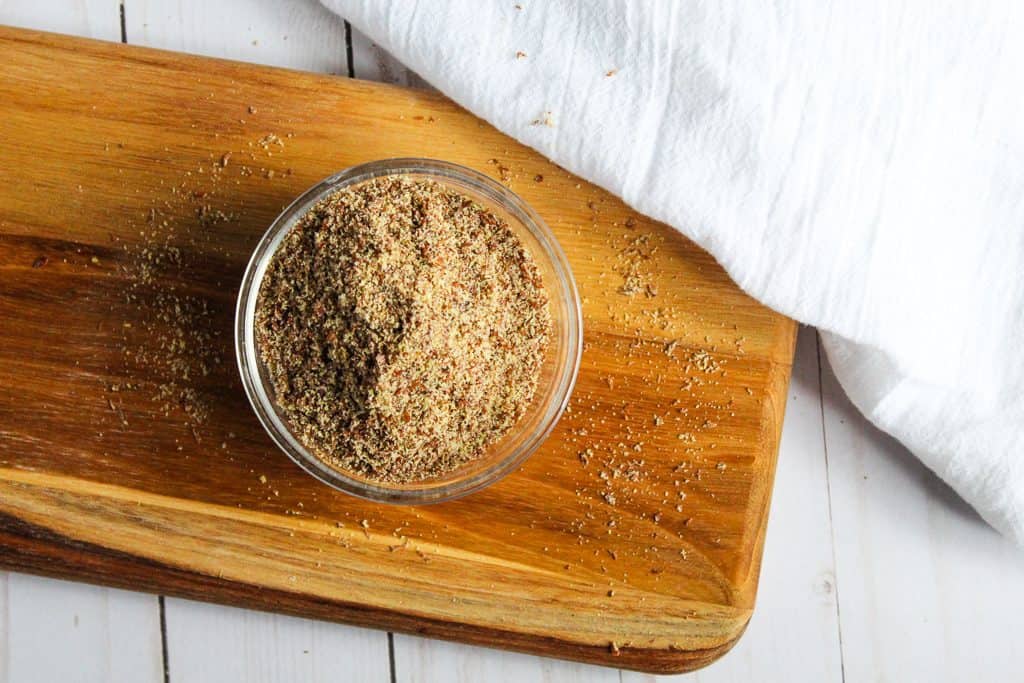
For some readers, flax seeds are more common than their chia counterparts. While we tend to associate them with baking, flax seeds are healthy too.
In gluten-free baking, ground flax seeds do a great job of binding ingredients together and mimicking that desirable ‘gluten effect’ by adding moisture and softness to your baking.
But be warned: Flax seeds tend to be rather large in comparison to chia seeds and they also have an outer shell. As a result, just adding them in their natural form to a gluten-free flour blend won't work as a binder.
They actually have to be ground for the binding effect to take place. Ground flax seeds are also known as flax meal.
Nutritionally, ground flax is rich in Omega 3 fatty acids (though not as high as chia seeds), iron, fiber and zinc – just to name a few.
Flax seed meal is of the best substitutes to xanthan or guar gum. Here are a couple recipes using ground flax seeds:
Quick Gluten Free Double Chocolate Biscuits
Gluten Free Italian Herb Bread for the Bread Machine
Gluten Free Outback Steakhouse Bread (Gum Free)
Flax seed meal will last a long time - here is a good one to use: Flax Seed Meal
Using flax seeds as a xanthan gum substitute
The ground variety of flax seeds are known as flax seed meal. They can be used as a 1:1 substitute in a recipe.
4. Unflavored Gelatin
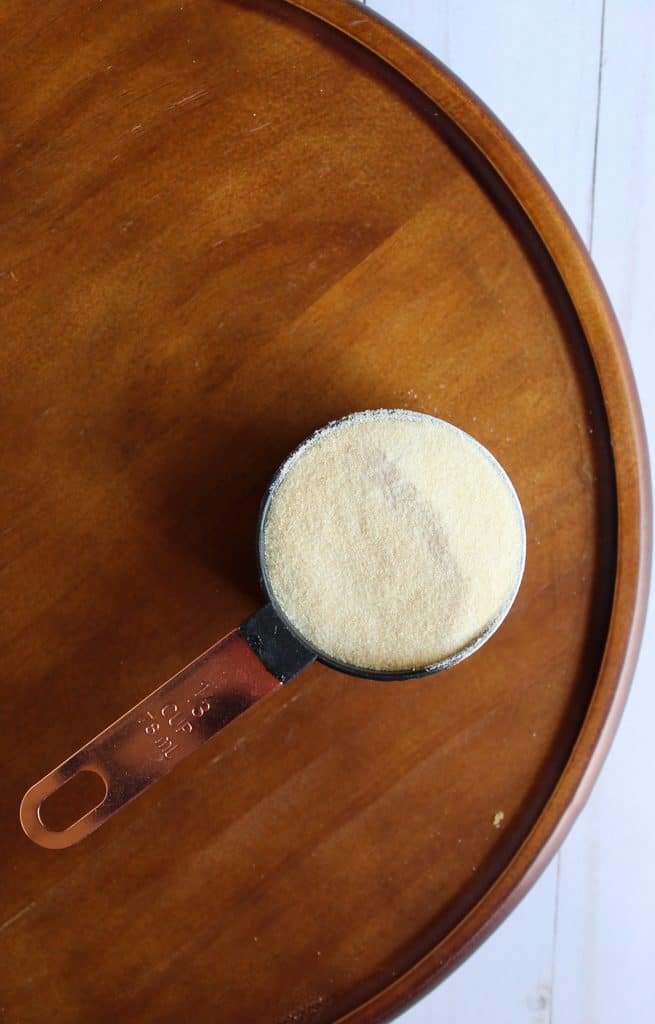
Gelatin frequently appears on the ingredients list of some popular sweet snacks such as gums and jelly beans. It's the gelatin which gives them their sticky, moist-on-the-inside texture. When mixed with a few tablespoons of water, it forms a gel-like substance which can be used in baking to make doughs stretchy and to retain moisture in baked food.
Gelatin is frequently used as an egg replacer and for this reason, it functions well as a binder.
A drawback is that gelatin is derived from animals and is therefore not suitable for vegetarians or vegans. Also keep in mind that not all gelatin is created equal - the popular flavored JELLO is not the type of unflavored gelatin for baking. Aspen Naturals is a good variety. But avoid any flavored gelatin. It is not the same thing!
Where to buy gelatin: Gelatin is on the high end in terms of cost, but it will last a long time.
Here are a few recipes that use gelatin:
Using gelatin as a xanthan gum substitute
Gelatin can be substituted as a 1:1 substitute in a recipe.
5. Agar Agar
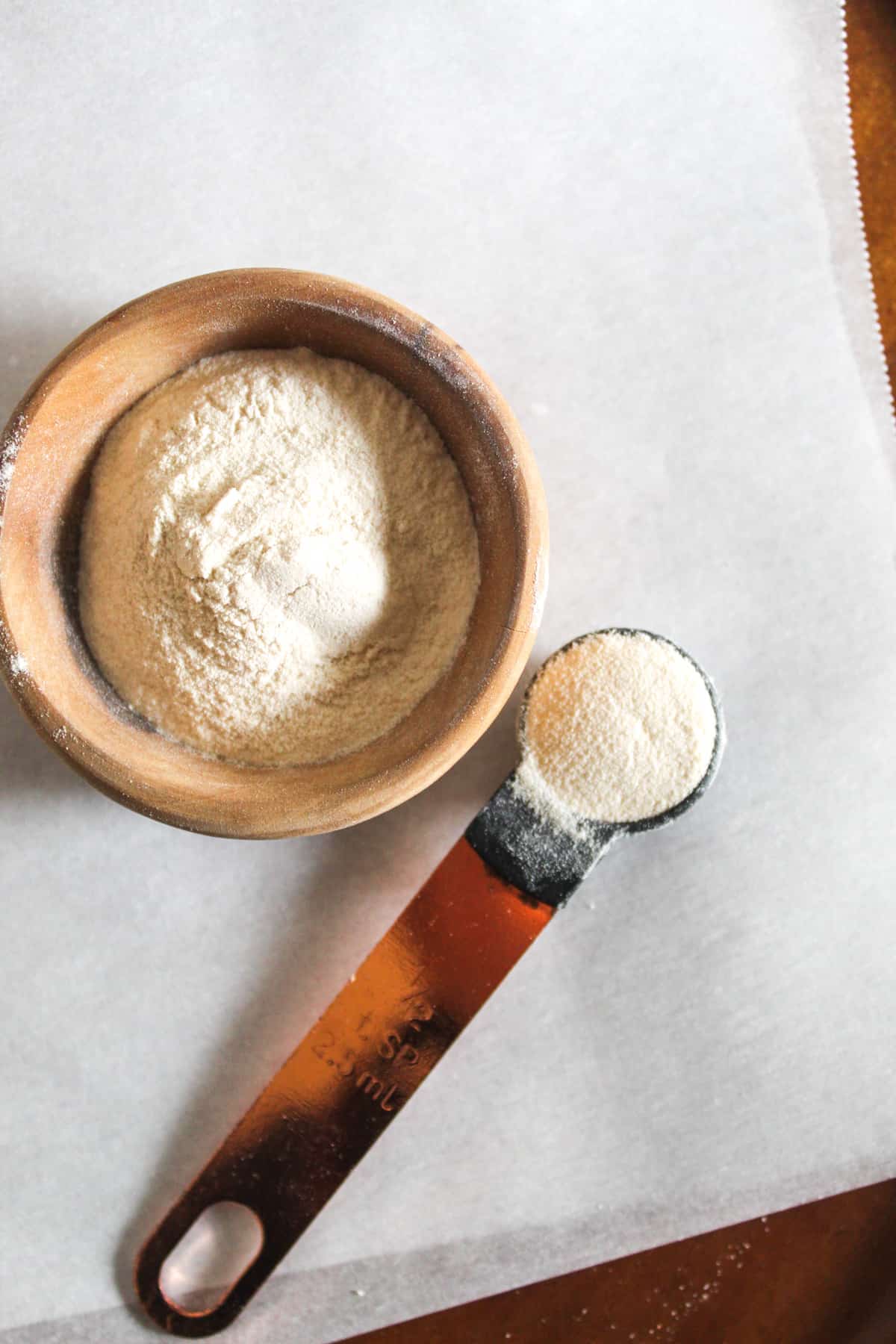
Agar agar is a vegan alternative to gelatin (and less expensive!). It is derived from the cell walls of red algae and has a low carb count making it great for a keto diet. This seaweed is a common food additive in food processing plants. Much like gelatin, agar agar can be found in a flavorless variety and it acts as a thickener, stabilizer, texturizer, forming a gel-like substance when mixed with water.
In gluten-free baking, this would result in a stretchier dough, chewier breads and (more) moist cakes. That said, it’s a good idea to exercise caution when using agar agar as using too much can result in excess moisture being retained, making your bread or cakes soggy.
Agar agar is available here and since a little goes a long way, you'll have it for a while.
Using agar agar as a xanthan gum substitute
Use no more than 2 teaspoons of agar agar to 3 cups of flour/starch. Typically 1 teaspoon to 1-2 cups of total flour/starch is a perfect amount.
6. Konjac Powder
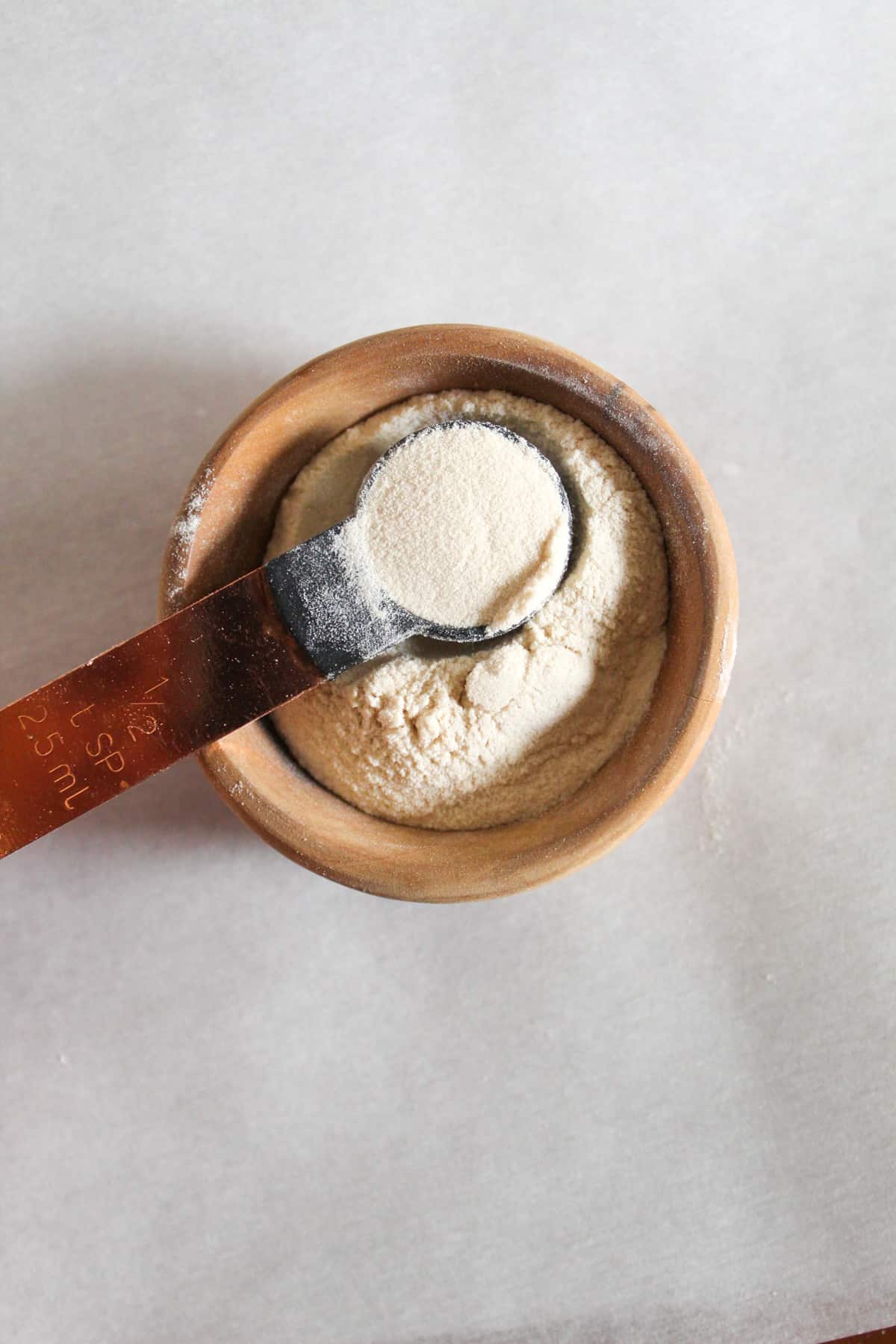
Konjac powder (also known as konjac glucomannan) is a fine powder made from the konjac, a root vegetable that grows in Asia. The powder is made from the root of this starchy plant, so it's an excellent thickener in cooking.
This powder is commonly used to thicken sauces, soups, puddings, and more. Konjac powder also absorbs moisture very well, which makes it great for gluten free baking. By now, it's pretty clear that good replacements for gluten must be able to absorb moisture and give baked goods the structure they need. Konjac powder is definitely one such replacement!
This is a good brand of konjac powder.
Using konjac powder as a xanthan gum substitute
Because konjac powder is great at absorbing moisture, use it in a reduced amount... In most cases, ½ teaspoon to 1 teaspoon is plenty.
7. Egg Whites
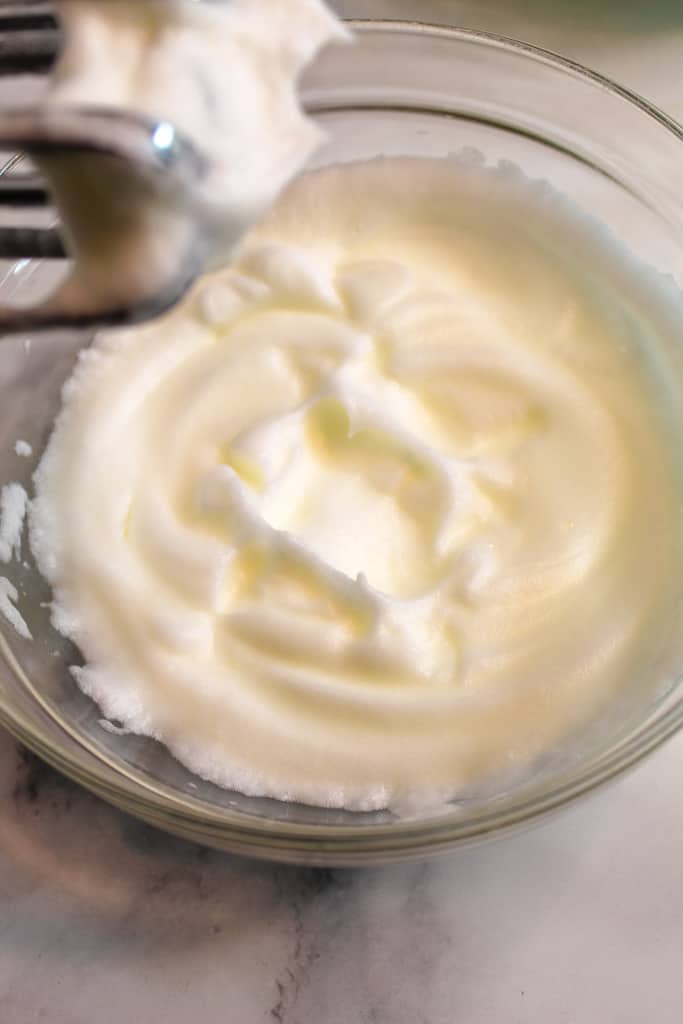
We all know where egg whites come from! But did you know that egg whites are mostly water? Yep, they mainly contain water and a bit of protein. If you've ever whipped them up to make a meringue, you'll know how good they are at reaching a light and fluffy texture.
This is true for baking gluten free goods with them, too. They can give moisture, structure, and a light texture to whatever you're baking. Since egg whites are such a good binder option, they are an excellent choice to prevent baked goods from having a dry and crumbly texture that no one wants to end up with.
Here are a few recipes that use egg whites:
Amazing Gluten Free White Bread
Golden Gluten Free French Bread
Using egg whites as a xanthan gum substitute
Use 1 whipped egg white for up to 1 Tablespoon of xanthan gum.
8. Arrowroot Starch
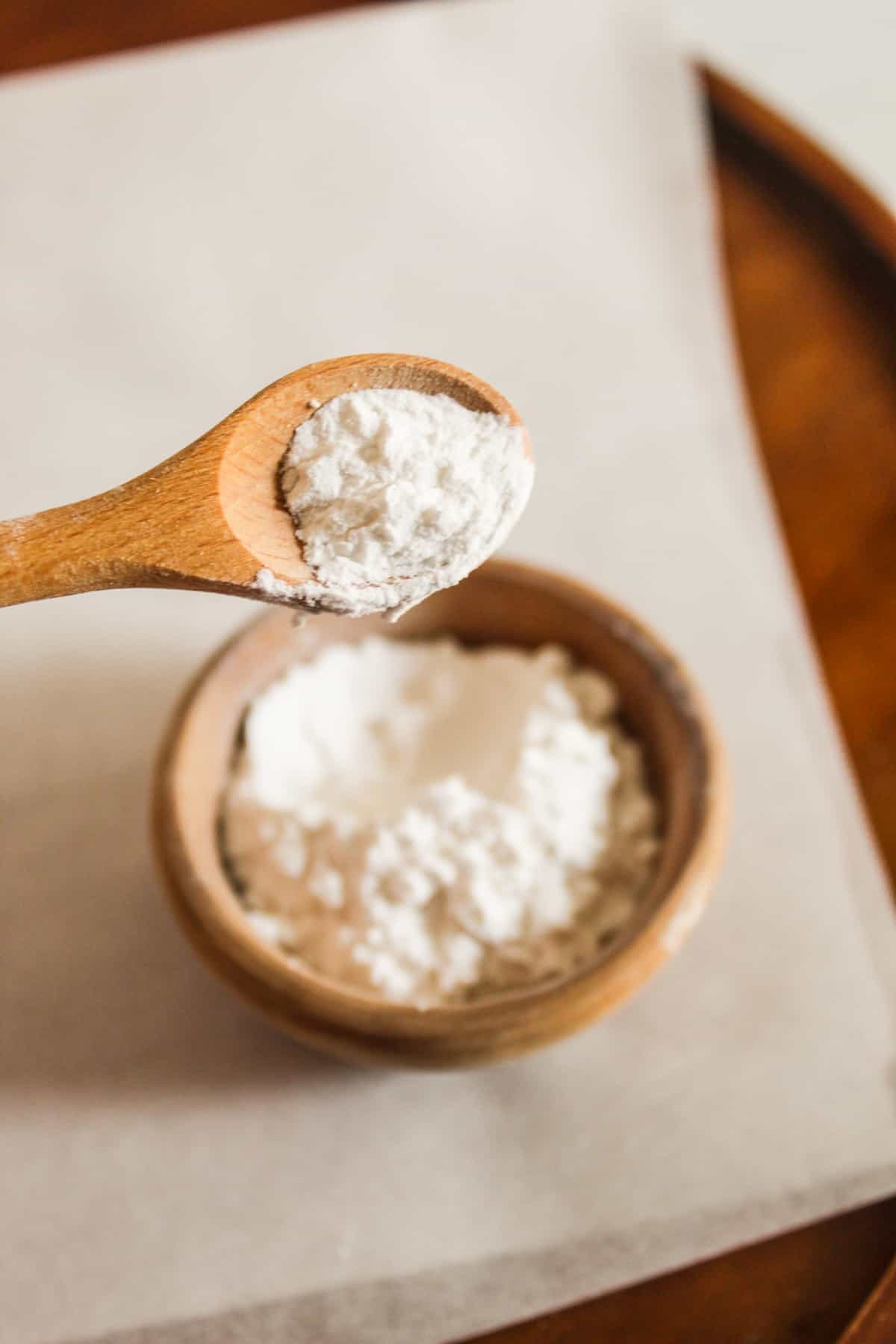
Arrowroot starch (also known as arrowroot powder and arrowroot flour) is a flavorless fine powder made by grinding up the root of the arrowroot plant. Since it's starchy with no strong flavor, arrowroot is one of the popular gluten-free flours in gluten free baking.
Arrowroot starch is yet another common ingredient that's great at thickening. It also helps create the structure that is so needed in baking without gluten. These qualities make it an excellent substitute for xanthan gum.
Here are a few recipes with arrowroot starch:
Quick and Easy Gluten Free Crepes
You can find arrowroot starch online - this size package will last a long time.
Using arrowroot as a xanthan gum substitute
Arrowroot flour can be substituted for xanthan gum in a 1 Tablespoon to 1 teaspoon ratio. So 1 Tablespoon of arrowroot for every teaspoon of xanthan gum.
9. Pectin
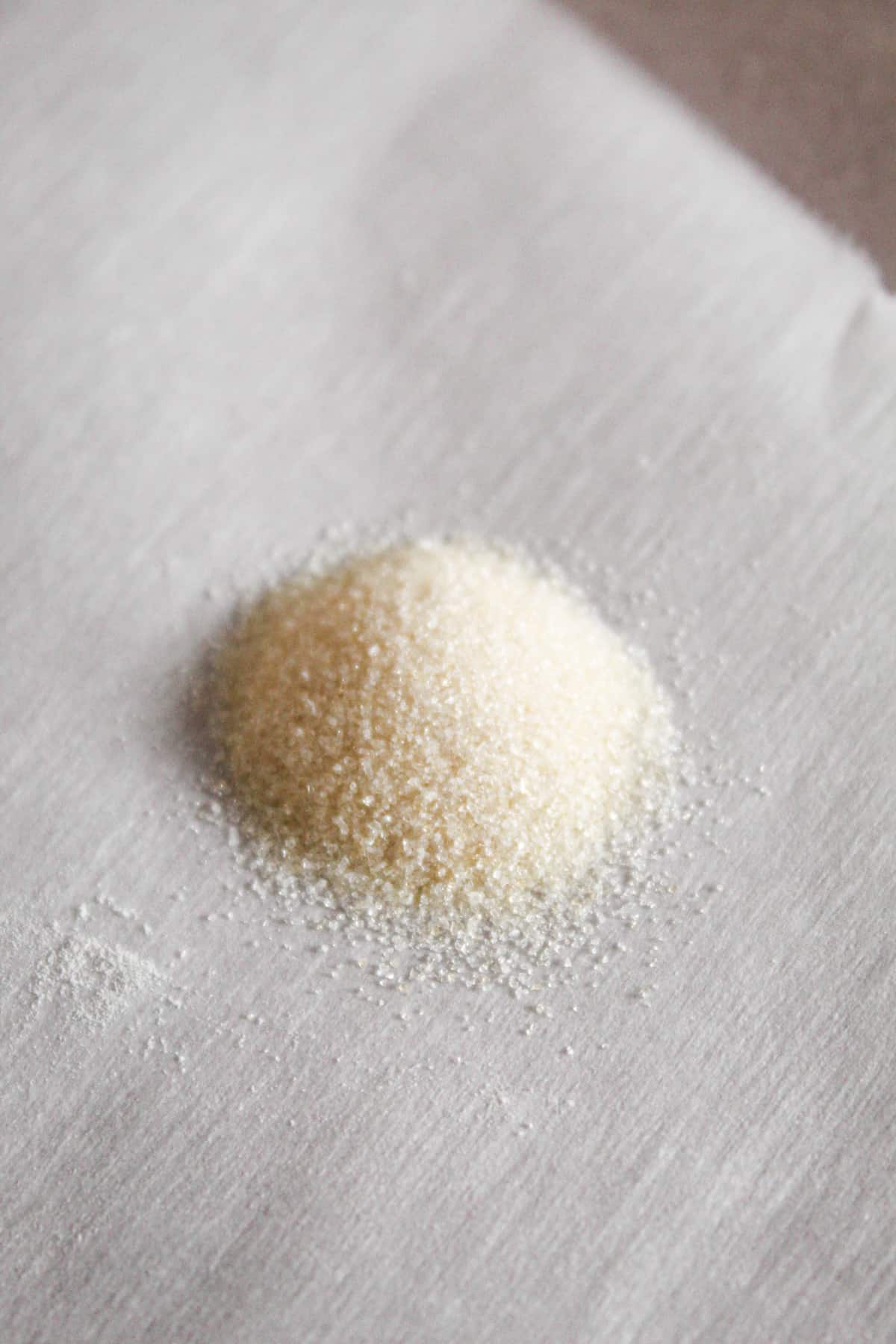
Pectin is white powder, polysaccharide found in the cell walls of certain fruits. It's similar to agar agar since it is a vegan gelatin. Pectin is commonly used to thicken fruit jelly and give it the body it needs to be more solid rather than runny.
Since it's completely plant-based, pectin is a wonderful ingredient to use in gluten free (and vegan) baking. Pectin is great at retaining moisture, creating structure, and giving baked goods a soft texture. So if gelatin and agar agar aren't your cup of tea (or you don't have access to them), pectin may be the xanthan gum alternative for you!
This brand of pectin works well.
Here is a recipe that uses pectin: Gluten Free Croissants
Using pectin as a xanthan gum substitute
Pectin can be substituted for xanthan gum is smaller amounts - use ½ teaspoon for every 1 teaspoon of xanthan gum.
10. Cornstarch
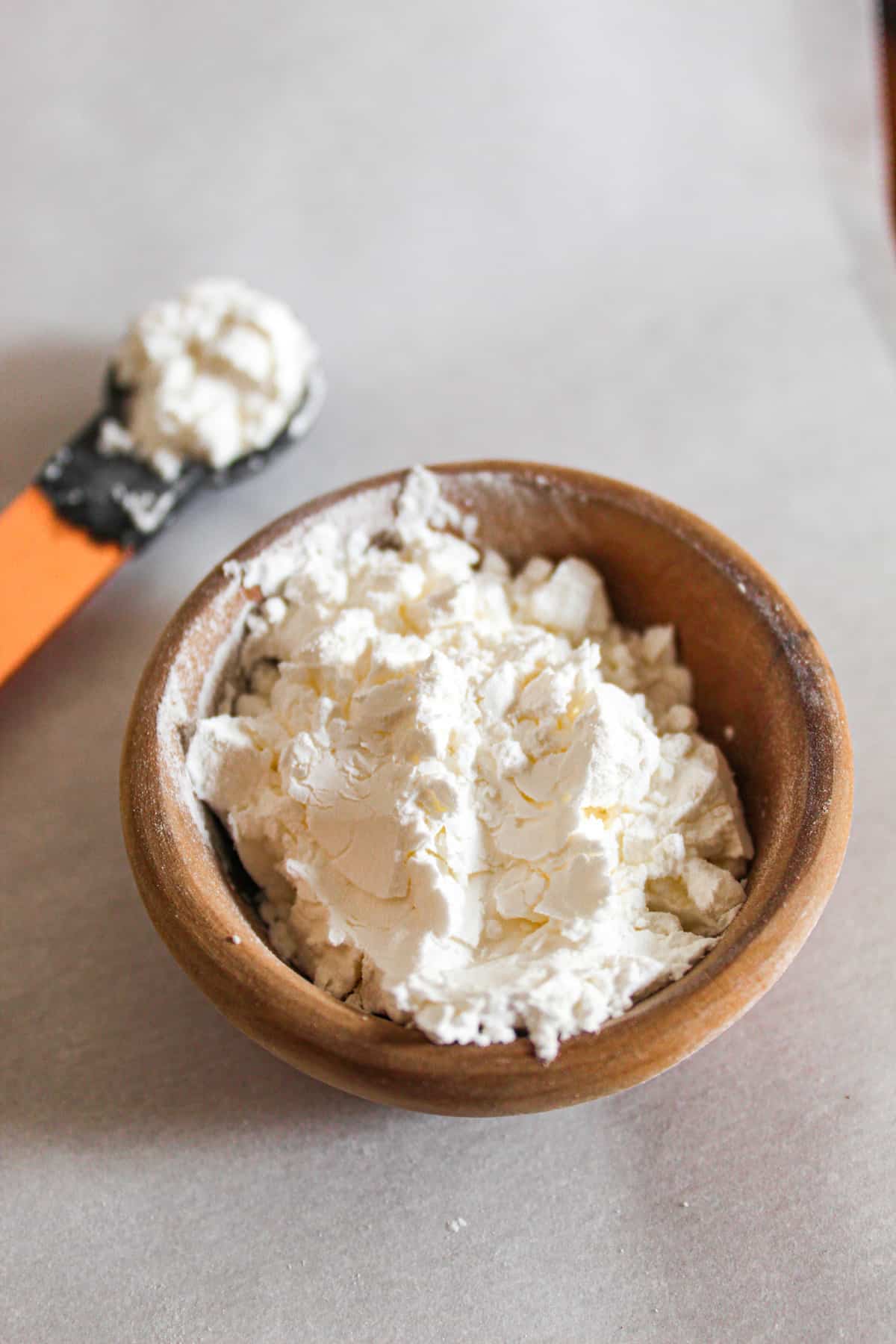
Corn starch is a starch derived from corn, and it's probably the most commonly used gluten free ingredients. Most of us have cornstarch in our pantry already, as it's widely used as a thickener in sauces, and soups. It's also one of the five ingredients in my gluten free flour mix.
The starch molecules in cornstarch absorb the moisture of whatever it's mixed into, which makes the mixture thicker (rather than on the runny side). But what exactly does it do in baking? In gluten free baking, cornstarch can be a wonderful binder that "glues" everything together and also gives a tender but structured texture.
You can find cornstarch in your local grocery store and online.
Here are a few recipes with cornstarch:
Using cornstarch as a xanthan gum substitute
Cornstarch can be added to a recipe to replace the xanthan gum in a 1:1 ratio.
What is the Best Xanthan Gum Substitute?
Xanthan and guar gum may be the heavy hitters when it comes to binding agents for gluten-free recipes, but they aren't the only game in town! What’s more, these alternatives promise to deliver results that are just as tasty as using xanthan gum or guar gum in your breads, rolls, muffins, cakes and pretty much anything else you'd like to substitute it for.
The thing to keep in mind when working with any alternative is that ingredients perform differently in different recipes. What may be a good substitute in a bread recipe may not do well in a cookie recipe. Overall, I've had the most success substituting with flax seed meal, chia seed and psyllium husk powder, however.
Substitute for Xanthan Gum FAQs
There are several alternatives for xanthan gum: psyllium husk, chia seeds, flaxseeds, unflavored gelatin, agar agar, konjac powder, egg whites, arrowroot starch, pectin, or cornstarch.
Xanthan gum is not a one-for-one substitute for corn starch. In some gluten-free recipes it may work, but not all.
Xanthan gum and gelatin are not the same thing. Gelatin is an animal by-product, while xanthan gum is not. They are one-for-one substitutes however.
There are many great options for a xanthan gum substitute for a keto diet, psyllium husk is probably the best option, but chia seeds, flax seeds, unflavored gelatin, agar agar, konjac powder, pectin, corn starch, arrowroot flour, and egg whites are also good options.
Gluten-Free Recipes to Check Out:
This article was originally published 10/26/2013, then updated 3/23/2018 and updated again with new pictures 8/28/2019. Updated 4/7/2023 with new information.


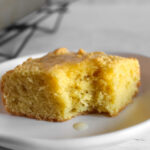


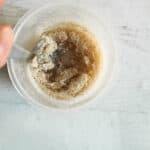





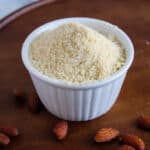



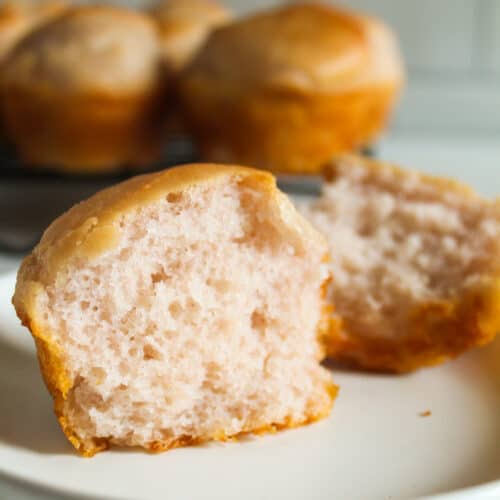
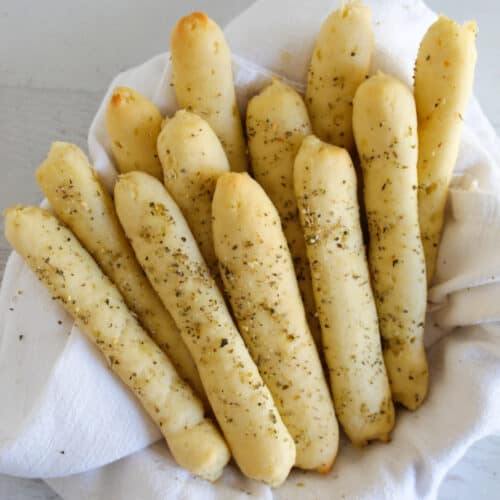
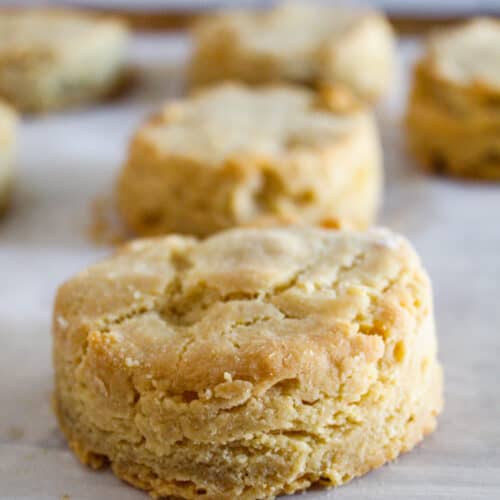
maddalena
really interesting!, but in what proportions add flax seed? I only those
Thank you!!
Chrissy Lane
Hi Maddalena,
In most recipes, you would use the same proportion of flax seed as xanthan gum. It's a one-for-one substitution. So 1 tsp. of xanthan gum would mean 1 tsp. of flax seeds (and this would mean the golden flax seeds).
Thanks for asking!
Claudette
how much psyllium husk replaces 3/4 teaspoon of xanthum gum. Also, does gelatin work or collagen powder?
Christine
Hi Claudette,
Sure so for 3/4 teaspoon of xanthan gum, if the recipe is calling for 1 cup of flour, then use 2 teaspoons of psyllium husk powder. I usually stick to 2-3 teaspoons in a recipe.
Hope that helps!
Christine
Zsa Zsa
Thanks just what I was looking for. So how would the other ingredients be substituted? I am specifically looking to use psyllium, chia or gelatin.
Chrissy Lane
Hi Zsa Zsa,
Glad it helped you out!
This article addresses psyllium and chia substitutions - https://zestforbaking.com/make-substitutions-xanthan-gum-baking
Mike
I didn't know there were so many alternatives. When we stared our GF life we were only looking for GF products. For the last couple of months now we try to eliminate starches and xanthan gum.
Great read thanks
Chrissy Lane
Glad you enjoyed it!
There really are a lot of options out there -
Thanks for stopping by!
Kendall
Thanks for posting this, I've recently had to start gluten free for my son and I and haven't wanted to use xantham gum or any corn product or corn by-product and this has help me greatly in helping find alternatives in my baking. And usually have flax seed and chia seed on hand for my family and our animals. Time to get plenty more and whip out recipes or find new ones that we love.
Chrissy Lane
So glad it helped Kendall!
Thank you for your awesome feedback!
Judy
Just a question: if substituting gelatin or anything else listed here for xanthan gum, is it measure for measure? Thanks.
Chrissy Lane
Judy,
It usually is - usually just a 1:1 substitution, unless otherwise noted.
Hope that helps!
saloni
hi,
these were very useful, thanks.
just one clarification, to use chia or flax we need to ground it then use right? so quantity to be taken is grounded mixture?
Chrissy Lane
Yes Saloni, that is correct.
Thank you!
NannyB
Hi...VERY interesting article. I grow vanilla beans and want to make some Vanilla Paste with some of my cured beans. Most recipes want you to add xanthan gum as a thickener. I believe what I need is a consistency almost like honey...maybe a tad thicker but not firm like a jello for sure. I am not liking what I read about the xanthan gum and I am curious to know which of the above listed suggestions would give me this consistency even after being cooled and decanted into small glass jars. I could not have "seeds" or small ground particles in the Vanilla Paste either. It needs to have a clarity to it! Can you help me to determine which is best to maintain the integrity of the paste? Thanks, and thanks again for this great article!
C.J. Brady
Hi Nanny B,
Thank you so much for the kind words!
So yeah I have a friend who makes vanilla paste... I asked her about it, since I've never ventured to make it! She said she uses agave nectar and the vanilla bean. That's it.
She said it turns out wonderful every time.
And she does strain it well, to remove the small particles, like you mentioned.
Hope that helps!
ellie new
Will using only chia seed work? I'm on a very restricted diet and can only use chia seed and not flax or any other above mentioned grains.
C.J. Brady
Hi Ellie,
Chia seed should work just fine. It's going to depend on the recipe though. Like this recipe, https://zestforbaking.com/amazing-gluten-free-white-bread-without-xanthan-gum I use a combination of chia and flax. But you could try to use just the chia. I'd be curious to see how it turns out for you.
Thanks for asking!
Sue
Just like to say thank you for your info as many times I have tried to find simple
solutions to no avail.
As I have been instructed to maintain a gluten free, dairy and soy free diet it hasn't been easy but now that I have read your spill on binders it has made life easier.
Thank you
C.J. Brady
Glad to help Sue!
🙂
Ogundeji Elizabeth
Thanks for this forum. I have been trying to get this Xanthan gum, I need it for my project but unable to get. I don't know may be it has another general name because I thought I would get it from those selling pharmaceutic chemicals but they don't know it. Thanks.
C.J. Brady
Hi,
Thanks for the question.
Amazon usually has it at a good price - http://amzn.to/1sEpHZv
Hope that helps!
Carolyn Fung
Thanks for all the great ideas for other things to use. Why can't the manufactures of gluten free breads and cookies use them? I am more interested in baked cookies and cakes than bread ; which some brands don't contain the gum. Would be nice if all of them did. Can you print more of the cookie and cake ones for us. Thanks so much again.
Christine
Glad you enjoyed it! I will definitely work on creating more cookie and cake recipes 🙂
~Christine
K O'Neil
I've also used Konjac powder (also called glucommen) as a 1:1 substitute for xanthan gum, which I can't digest. I bought it online.
Christine
Hi! oh great tip!
Thanks for sharing!
Christine
pamela garcia
Can't wait to try these tonight with some homemade soup!!! Thanks for the recipe and the substitutions. I now have another use for my flax seed meal.
Christine
Great, you are very welcome! 🙂
~Christine
Martha
Hi Christine, I’m trying to make a 5-ingredient cookie recipe right now, which contains : butter, sugar, flour, vanilla, & chopped pecans. I don’t have any of the items you mentioned right now, and the cookies are crumbling apart. The only thing I have here, that might hold the GF flour together, is eggs. Would you please tell me if eggs would work, & if so, how many eggs to use, per cup of flour?
Christine
Hi Martha,
That's a tough one - my best guess would be eggs and the number of eggs would differ from recipe to recipe. But typically a batch of cookies gets 2 eggs. Is this recipe gluten free as written?
~Christine
Maria Ambar
Hi. I'm newbie in baking.
So if I want to make cinnamon rolls and the ingredient stated 3,5 cups gluten free flour, so what is the ratio of gf flour (without xanthan gum) and say, I use chia and flax meal?
Thanks!
Christine
Hi Maria,
So it really depends on the recipe. Are you making these? https://zestforbaking.com/delicious-gluten-free-cinnamon-rolls-recipe If so, I'd suggest trying 1 tsp. of psyllium husk powder for the xanthan gum. I haven't made it with the substitute so I can't be certain of the results, but that would be a good place to start. I use chia and flax often, but psyllium husk might work better in this recipe.
~Christine
Ron Blanshine
One correction requested. I realize that the post is old, but the information about relative Omega-3 content between Chia and Flax seeds is wrong, way off. Contrary to your statement that Chia has more than 2.5 times the Omega-3 oils of Flax, Flax has about 30% more Omega-3 according to this web page: https://www.healthline.com/nutrition/chia-vs-flax , and that is not the only reliable source I have seen this information.
Christine
Hi Ron,
Thanks for the comment - so I use a lot of these substitutes so I definitely don't want any errors in my information!
But chia does in fact have more omega-3's than flax. That's according to Harvard public health, https://www.hsph.harvard.edu/nutritionsource/food-features/chia-seeds/.
The actual product listings for each show the same thing... flax: https://arrowheadmills.com/cpt_products/organic-flax-seed/ and then chia: https://www.bobsredmill.com/organic-chia-seed.html
I make sure all of my information and recipes are on point so I welcome any feedback. (Provided nothing medical as I am not a medical doctor or nutritionist, just a baker who loves to bake and wants to make sure info is correct 🙂
~Christine
Mado
Thanks for this great info! Which would you recommend for making GF tortillas?
Many thanks!!
Christine
Hi Mado,
It depends on the recipe... I have a good cassava flour one that's just 4 ingredients https://zestforbaking.com/cassava-flour-tortillas
Starch is going to be really important in any tortilla recipe though.
~Christine
camille
Hi Christine,
I was diagnosed with celiac disease about 13 months ago. Since then I've been experimenting with a multitude of recipes for baking. I think I've got the hang of it however I have much to learn. I have been a scratch baker almost all of my live, I'm 69. This is quite the change.
The reason for this post is that I just saw your recipe for GF bread, then crotons. I have a favorite French onion soup recipe but every homemade bread I have used to float on top, so that I can have baked cheesy goodness, hasn't work. The bread falls apart, gets granular and falls to the bottom of the crock with the cheese!
Have you used this bread for this purpose? Any suggestions?
Thanks so much,
camille
Christine
Hi Camille,
Oh I definitely understand... have you tried to toasting it really well? You could bake this one https://zestforbaking.com/golden-gluten-free-french-bread-dairy-free then let it dry out and cut up the slices into small pieces then season and toast the pieces in the oven.
Hope that helps!
~Christine
Larissa
Hi Christine,
I'm new to bread baking and I'm GF (Celiac). I have a couple of burning questions that I would love to hear from your experience. I've been using a GF recipe book (ATK) and so far I'm pleased with the outcome. They feel a bit more dense but are still soft and yummy. I will be of course venturing on some of your recipes in the near future (the french bread looks amazing!). To my questions:
1. I'm curious specifically on psyllium husk powder, I've read there are a couple of varieties and some can impart a purple-ish tone to the baked goods. I've been using a GF recipe book that calls for it, so far so good but the loaves are turning brown like whole wheat (event though it's a classic sandwich bread, no whole flours). Do you know the reason for that and what brand do you recommend that would give a natural bread tone-like? And for one 9x4 loaf, how much do you recommend using?
2. How can I figure out when the bread is fully baked? The ones I've baked seem to be a bit overcooked and a bit drier than I'd like. Other baked goods like cakes etc is pretty easy to figure out but bread is still a mystery to me.
Thanks in advance, really happy I came across your website and all the fantastic recipes and resources.
Larissa
Christine
Hi Larissa,
Thanks for asking!
So for the psyllium husk powder, how much are you using? Typically I use no more than 2 teaspoons in a loaf. If that sounds about right, then the color is just the nature of psyllium husk - a teaspoon of molasses can help avoid a purpleish tint, but it'll still bring out the golden brown.
And the surest way to determine when bread is done is with a thermometer. Bread needs to get to 210 F to be considered done. And sometimes, not all the time, but sometimes, you can still tap on it and it'll sound hollow inside. But the thermometer is definitely the surest way.
Hope that helps!
~Christine
Linda
Hello If i substitute psyllium husk for the xanthan gum would I just add it in or should it be mixed in warm water first? Thanks so much for all the info, so informative and helpful to us novice bakers of gluten free
Christine
Hi Linda,
For psyllium husk, you would just add it in. No water needed.
Let me know if I can help further!
Christine
Linda
Thanks so much I will try that. Linda
Madeline
Hello. I can’t tolerate Xanthan gum gives me upset stomach can I substitute cornstarch if yes will it be 1-1?
Thank you.
Christine
Hi Madeline,
So it depends on the recipe - but typically psyllium husk powder is a good substitute (in general). Cornstarch may work too though - not sure if that helps, but let me know if you have other questions!
Christine
Darina
What about pectine as a replacement?
Christine
Hi Darina,
Yes, pectin can be used also - I haven't tested it in recipes, so I can't say for certain on the amount to use but it definitely can be used.
Thank you for asking.
Christine
Olena
What temp for baking the Boston style brown bread.? I m thrilled to have found your site. Olena
Christine
Hi Olena,
Welcome! Thanks for asking - it's 325 F.
Let me know if I can help with anything.
Christine